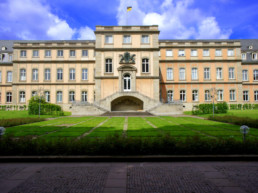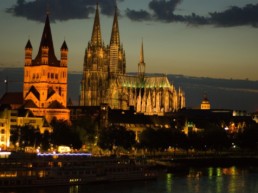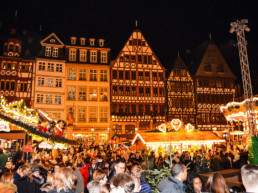“Nearly 95% of the city was destroyed in an hour”, our guide Michaela informs us as we walk through tunnels several stories below the city. As our group winds through the narrow dimly lit corridors we begin to appreciate the pivotal role these tunnels have played throughout Nuremberg’s history, from their origins as beer cellars to their use during WWII, sheltering residents from bombing raids that all but destroyed the town above. But, of course, the city has since rebuilt itself in more ways than one.
Welcome to Nuremberg, the largest city in Franconia and a cultural hub in Germany. With its roots in the Holy Roman Empire, Nuremberg has a long and storied history dating back to the 11th century. The city flourished in the Middle Ages due to its central position along a major European trade route. The town’s medieval roots have been maintained and its one of the best examples of a walled medieval city in the country, though much of it was rebuilt after the war. During the Renaissance, Nuremberg became a pillar of culture in Germany and Europe, with several notable residents, including painter and theorist Albrecht Dürer.
Today, Nuremberg remains in the spotlight as a popular tourist destination in Germany due to its high density of medieval sites, an abundance of historical and cultural museums, and a strong beer heritage. It’s also the site of one of the most popular Christmas markets in the country takes over from late November to Christmas Eve.
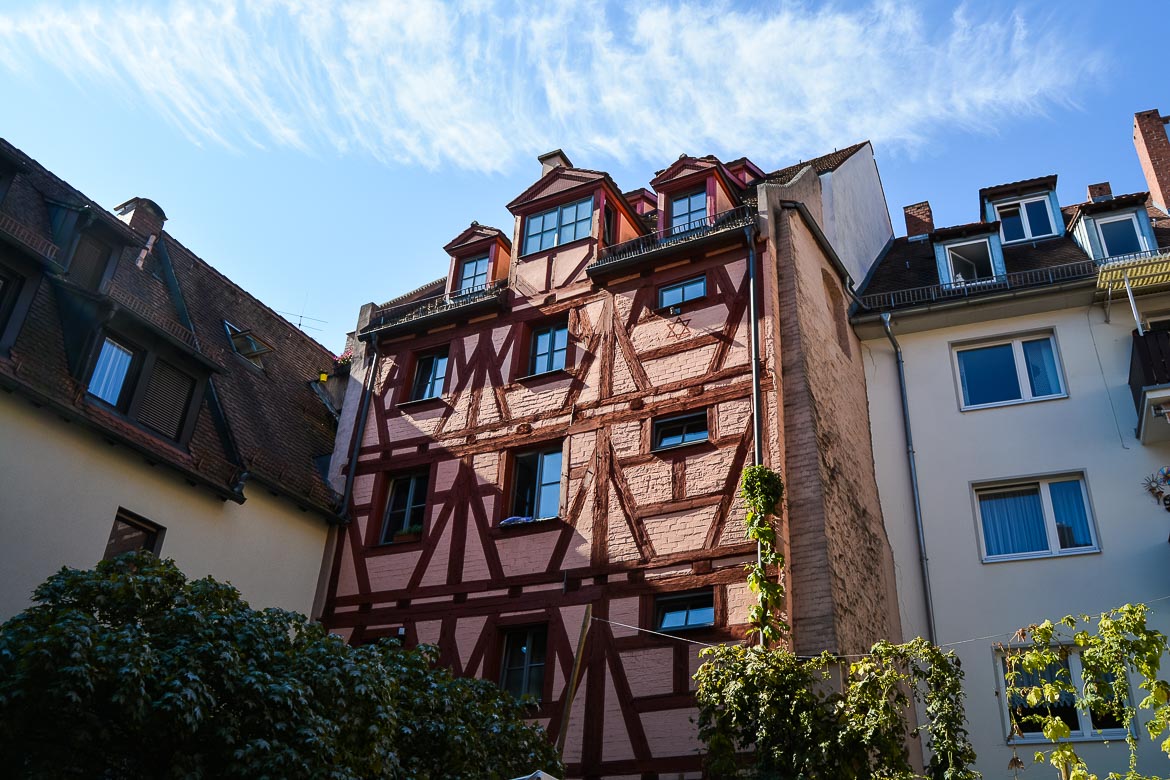
Nuremberg Travel Guide
See the Sites
Nuremberg offers a dizzying array of impressive buildings, particularly in and around the Altstadt, or Old Town. While touring Nuremberg be sure to visit Sankt Sebaldus Kirche, the oldest church in town built in 1215, the Rathaus, or Town Hall, whose construction dates back to the 1300’s, Frauenkirche, another church steeped in history, the stunning fountain in the Hauptmarkt Der Schöne Brunnen, and Tanner’s Lane, or Weißgerbergasse, for the town’s best preserved street of half timbered houses.
There’s a free three hour walking tour on Saturdays that takes you through the old city and touches on Franconian history and Nuremberg’s evolution as a city.
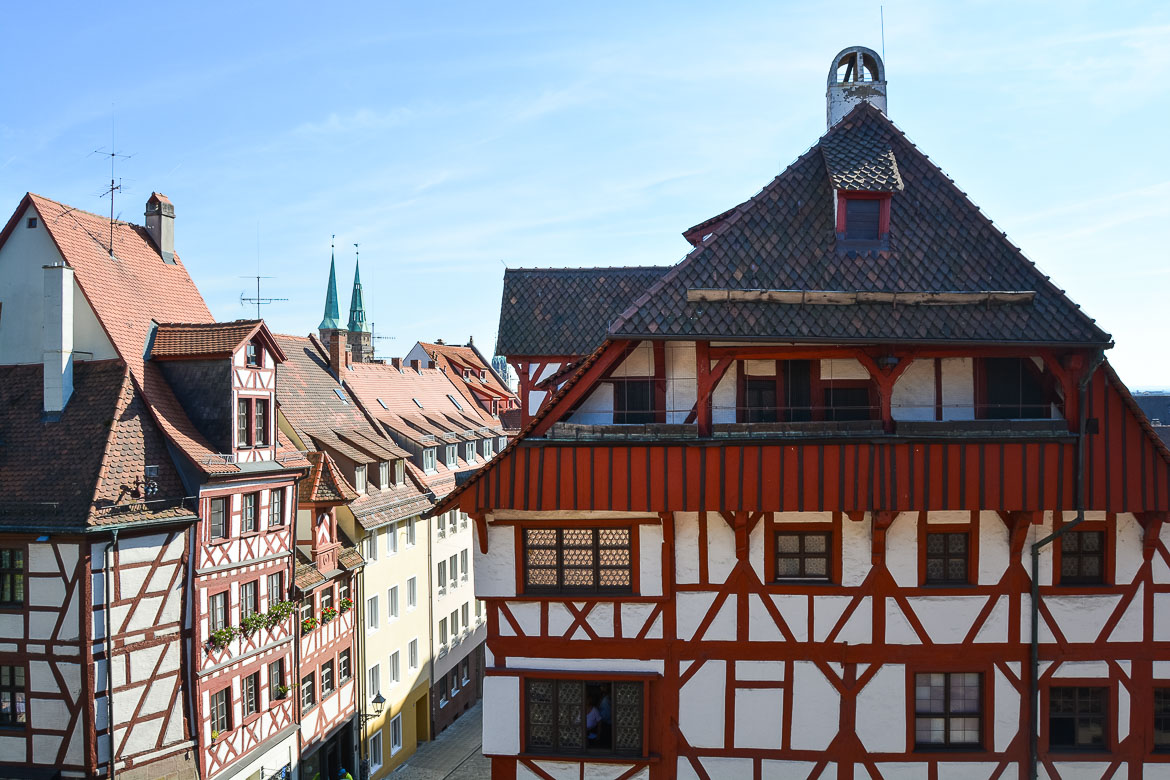
Get Cultured
The Imperial Castle, locally known as Kaiserburg Nürnberg, is an impressive structure that demonstrates the city’s importance throughout its history. On the castle grounds are the Sinwell Tower, built in the 13th century and miraculously unaffected during the destruction in WWII, and the Deep Well, which established a water source for the castle and is 50m deep. The opportunity to admire the building and grounds are reason enough to visit, though the space is now used as a museum with engaging exhibits.
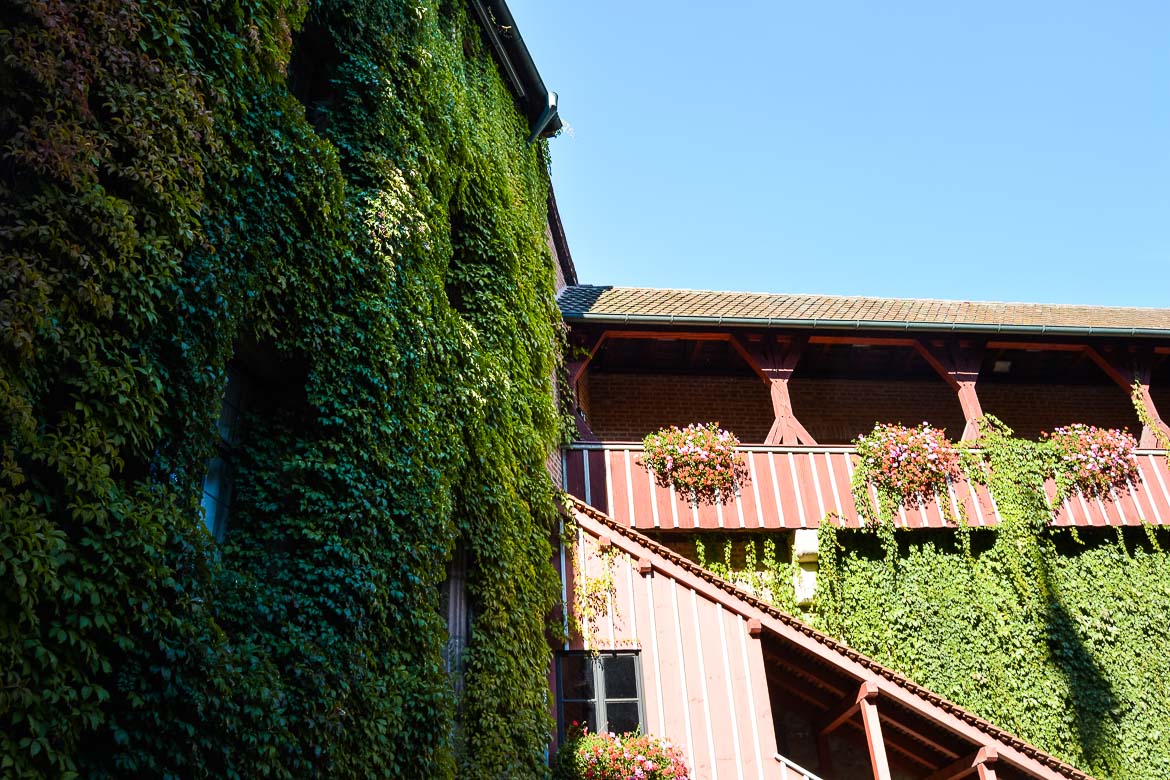
In a city with so many medieval buildings, the Neues Museum is a modern marvel. The museum is dedicated to contemporary art and design post 1945 and hosts a permanent collection as well as rotating exhibitions. The space is stunning, with the building almost as big a draw as the art housed within.
You can’t miss the Albrecht Dürer Haus in Nuremberg’s Altstadt. The grand half-timbered house stands out both for its design and how well preserved it is. Dürer, the unofficial mascot of Nuremberg, made this his residence and studio during the early 16th century. The house has been transformed into a museum showcasing his life, influence, and work.
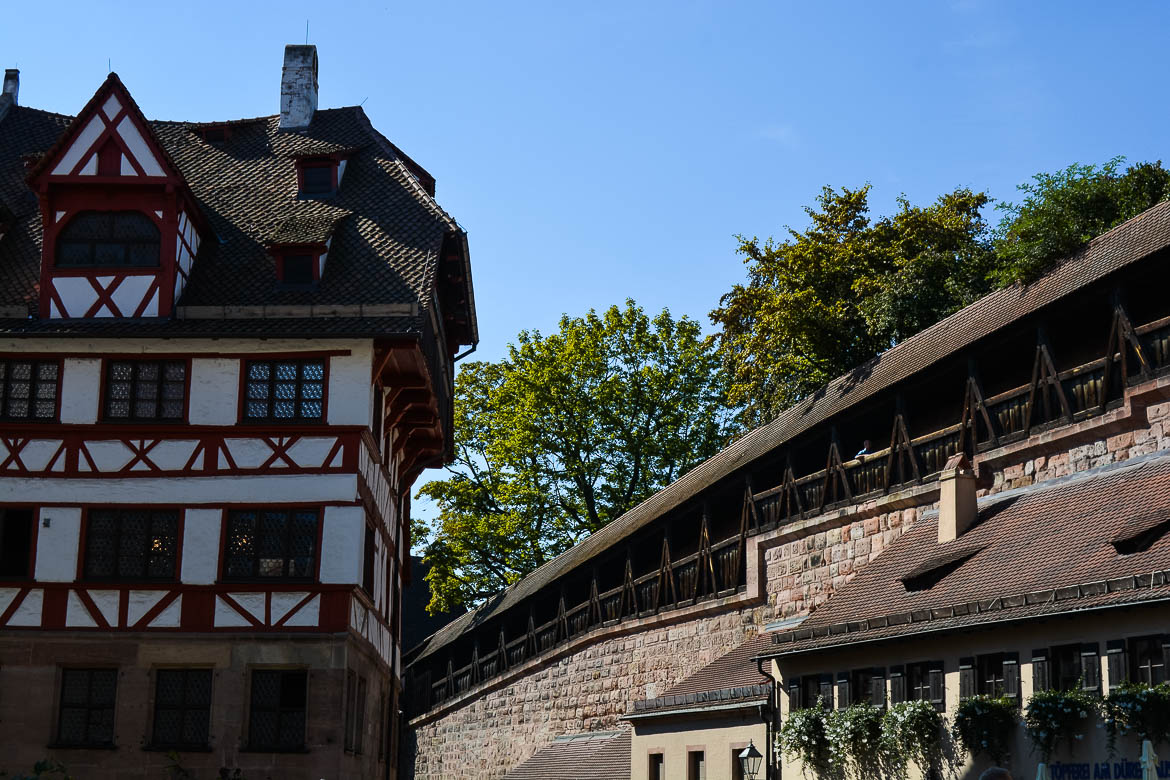
Learn Something
To gain a deeper understanding of Germany’s cultural heritage, there’s no better place in the country than the Germanisches Nationalmuseum. This enormous museum hosts a myriad of cultural artifacts, art, instruments, and objects that have contributed to Germany’s evolution. At the entrance to the museum is The Way of Human Rights, an outdoor monument designed by Israeli artist Dani Karavan as a reminder of Nuremberg’s past and its ongoing commitment as a ‘City of Peace and Human Rights’.
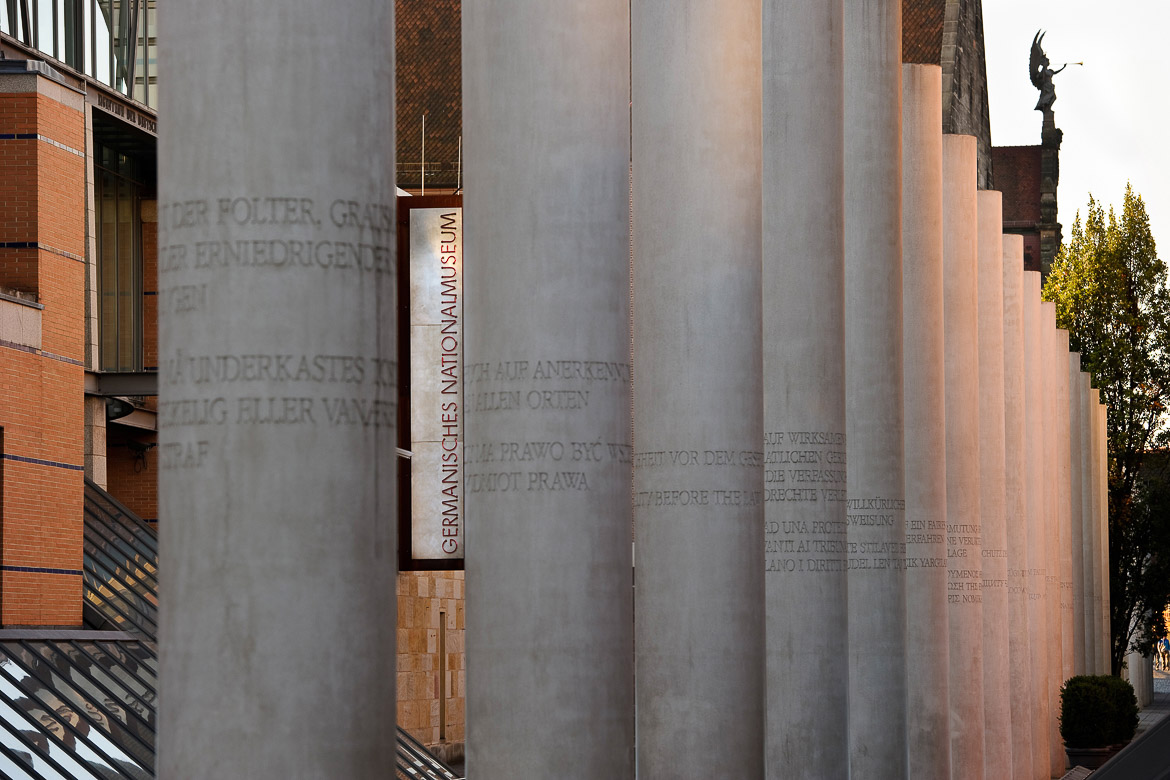
An important reminder of Nuremberg’s role in WWII, the Nazi Party Rally Grounds provides visitors with an important educational, as well as emotionally impactful, experience. Nuremberg was a place of significance for the Nazi regime and its propaganda machine, with the Rally Grounds regularly hosting large, carefully staged and filmed, events meant to demonstrate Nazi power and public support. The grounds were converted into a museum in the ’90s, and feature exhibits on the “causes, contexts and consequences” of Hitler’s rise to power.
After the war, Nuremberg also played an important role as the site of the trials of high ranking officials in the Nazi regime. The allied countries carried out the proceedings in the Nuremberg Palace of Justice, which laid the foundation for similar trials relating to WWII and subsequent war crimes. In 2010, the site was opened to the public as the Memorium Nuremberg Trials to deepen people’s understanding of the trial and its significance.
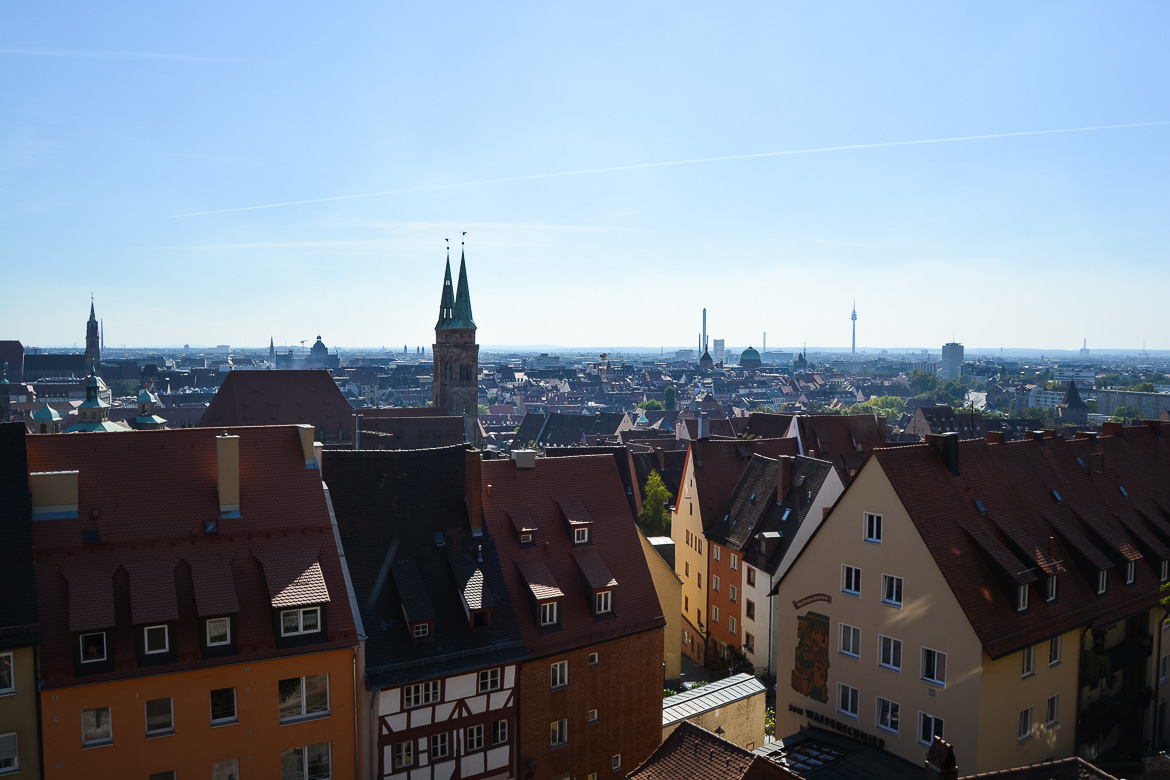
Have A Beer Experience
Well below the city’s Old Town is an underground system of cellars that have been vital to Nuremberg’s history for almost 700 years. Carved from the sandstone, these Rock Cut Cellars were originally used to keep beer cold but were subsequently used as a safe shelter for residents during the unrelenting bombing raids of WWII. Visitors can explore the caves and learn more about their importance through regular tours, which include a look inside Hausbrauerei Altstadthof, Nuremberg’s central craft brewery.
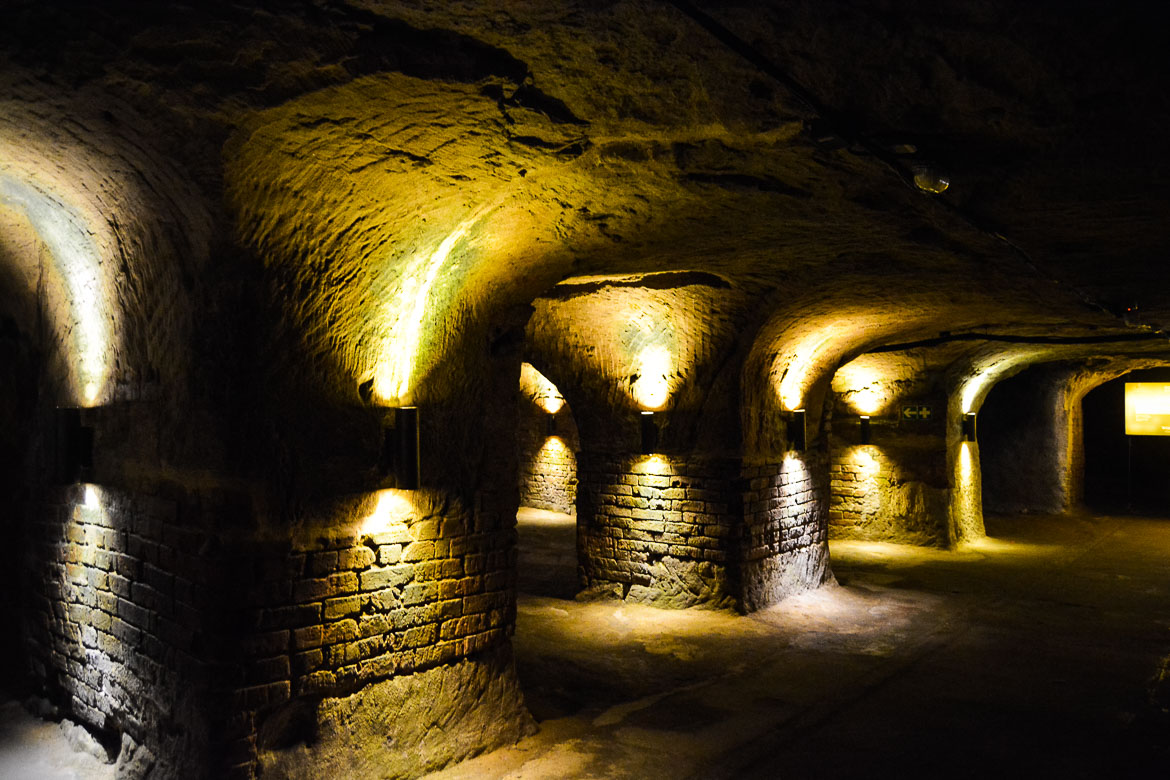
Established in 1984, Hausbrauerei Altstadthof brought brewing back to the centre of Nuremberg’s Old Town. The brewery prides itself on using regional and organic ingredients in the production of traditional Nuremberg beers, such as local favourite Red Beer. To get a taste of Nuremberg’s beer styles, why not go for a metre of beer – eleven 0.2L glasses of the various beers produced at the brewery. Food at Hausbrauerei Altstadthof is excellent and features a variety of Franconian specialties.
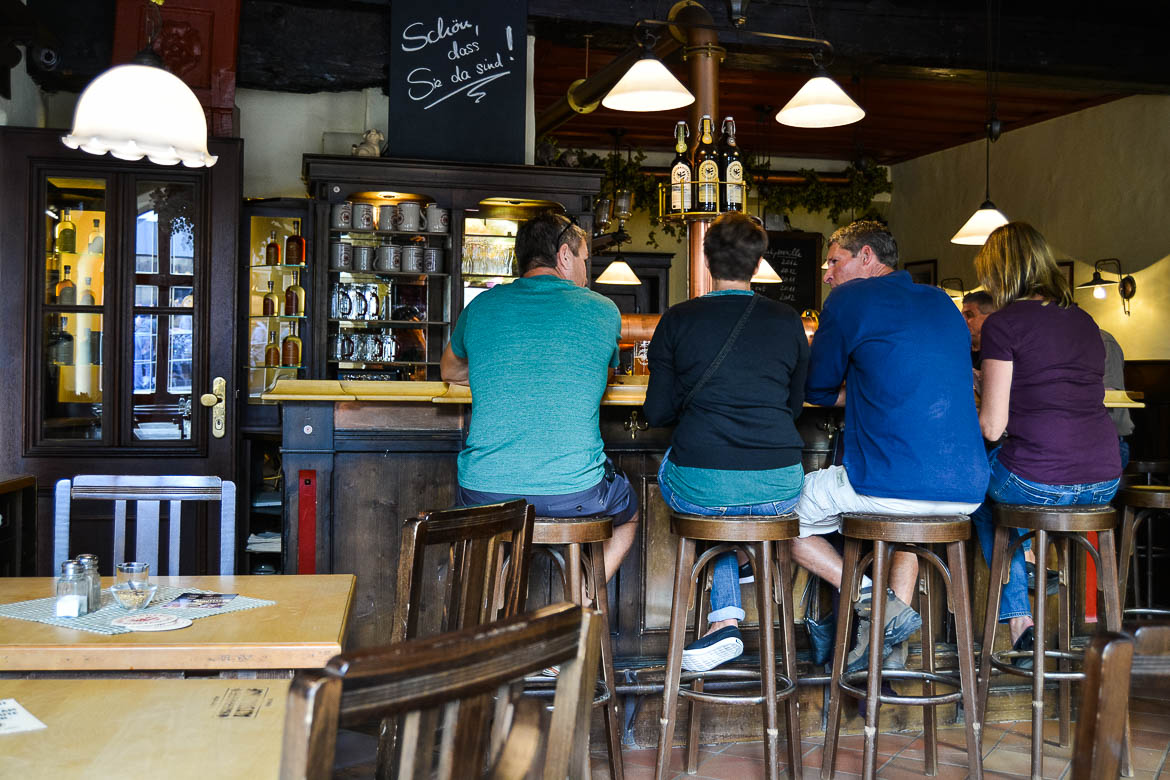
On the border of Nuremberg and Fürth is Brauerei Tucher, a brewery that has been making beer since 1672. Though the brewery makes several varieties of beer, the Hefeweizen is particularly popular in Germany and abroad. The brewery offers tours daily from Monday to Friday, though you need to contact them in advance of your arrival to schedule one. A restaurant on site features classic German and local dishes.
Located out of the centre of Nuremberg, but easily accessible via the U-Bahn, is the brewpub and restaurant of small specialty brewery Schanzenbräu Brauerei. The inside of the restaurant is basic but inviting, and the pleasant beer garden is a popular spot during warm weather. Come here to try the beers produced at the brewery, including a refreshing Hell and their take on the classic Nuremberg Red Beer.
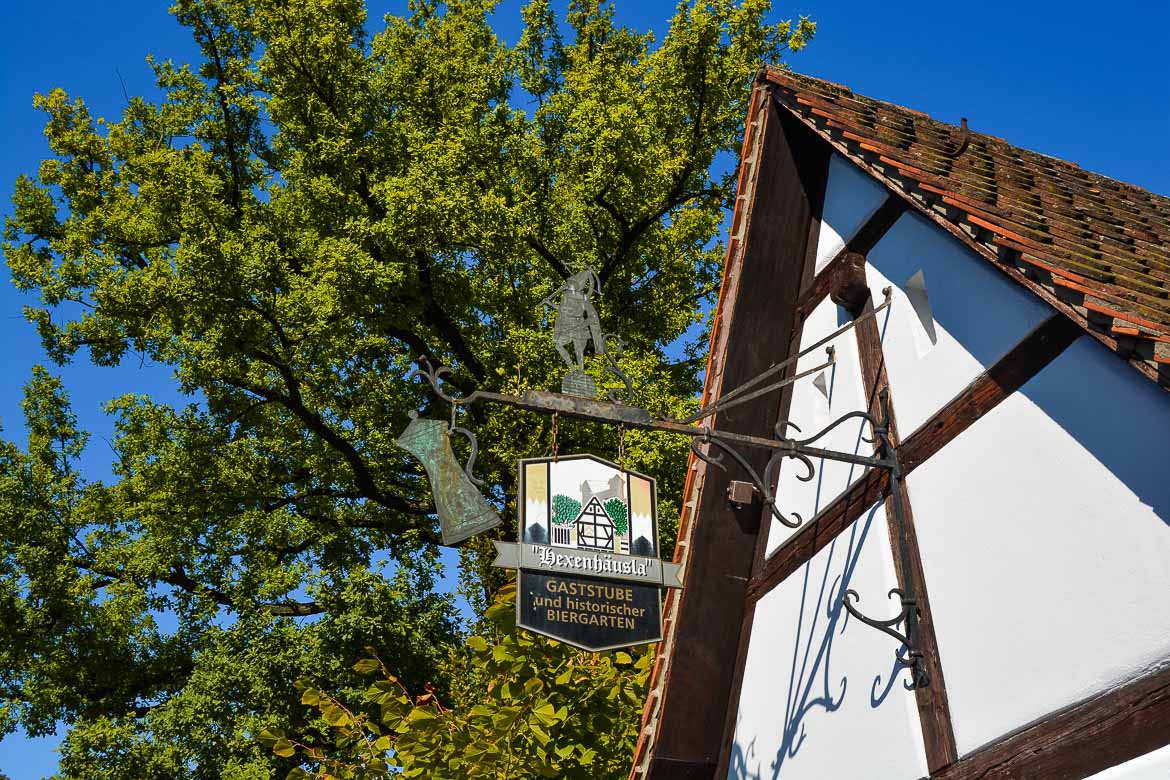
Where To Eat & Drink
Bratwurst is a staple across Germany, though each region claims their version is superior. In Nuremberg the local bratwursts are small, pork sausages spiced with marjoram and grilled over an open flame. Restaurant Bratwursthäusle in the Altstadt is the best spot to try this local specialty. Both locals and tourists fill into into this traditional eatery to get their fix of the homemade sausages, which are served up with sauerkraut and potato salad.
A stone’s throw from Dürer’s former house is the restaurant Albrecht Dürer Stube, perhaps the most traditional restaurant in town. The restaurant has been handed down from generation to generation and continues to make the regional specialties as they’ve always been prepared. The walls are nearly fully covered with framed pictures and documents adding to the ambiance.
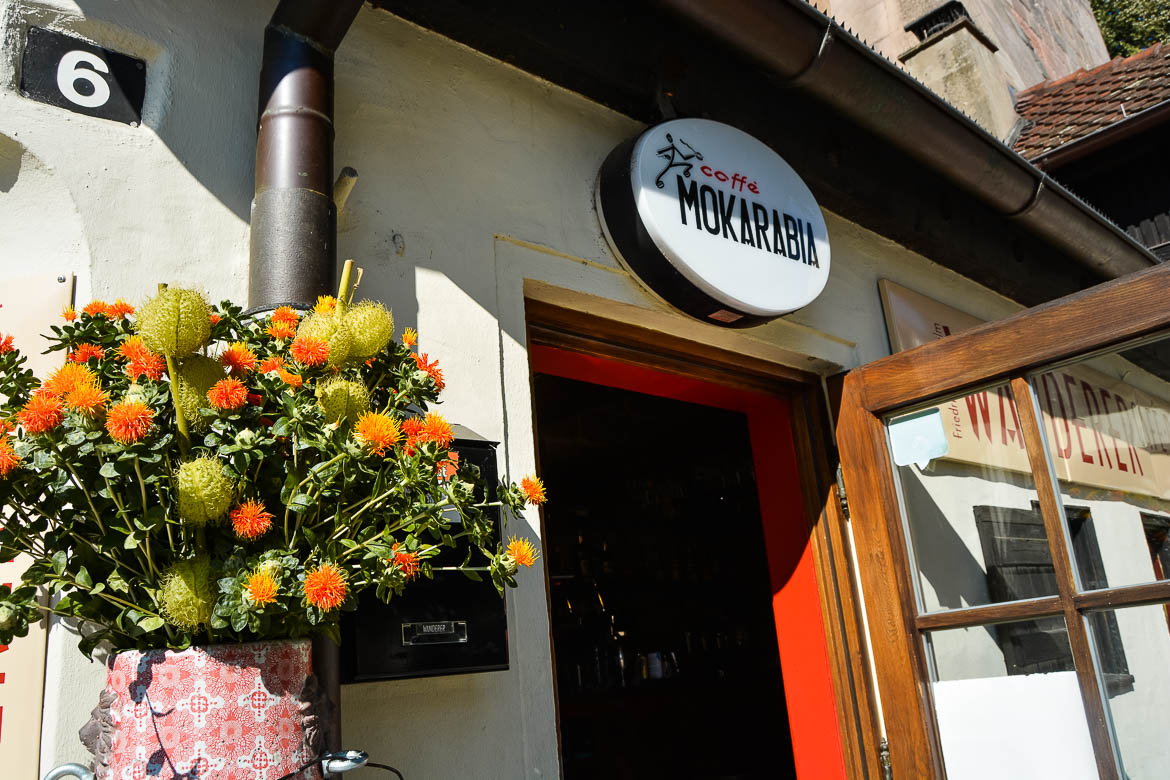
When the nice weather comes to Nuremberg, locals head in droves to the Tiergärtnerplatz, an open area near the city gates in the Old Town. There are a few patios extending into the square for those lucky enough to score a table, though when it gets busy most people choose to take their beverage of choice and sit on the cobblestone. Cafe Wanderer / Bieramt is on the smaller side yet charming nonetheless, offering up espresso on one side and an impressive selection of beers on the other.
While it may not look like much from the outside, the Mata Hari Bar has the distinction of being the smallest bar in Nuremberg. Always a happening spot in the city centre, Mata Hari offers local beers, classic cocktails, and a good selection of whisky that are enjoyed by a friendly and fun local crowd.
Across the river is craft beer bar Bierwerk, which features over 150 bottled beers and a dozen or so on tap. This spot is relatively new in Nuremberg but has amassed a local following and has piqued the interest of beer loving visitors. For a great meal or late night snack, the delicious meat and cheese boards are a no brainer. Good food, a nice space, friendly staff, and lots of beer all come together at Bierwerk.
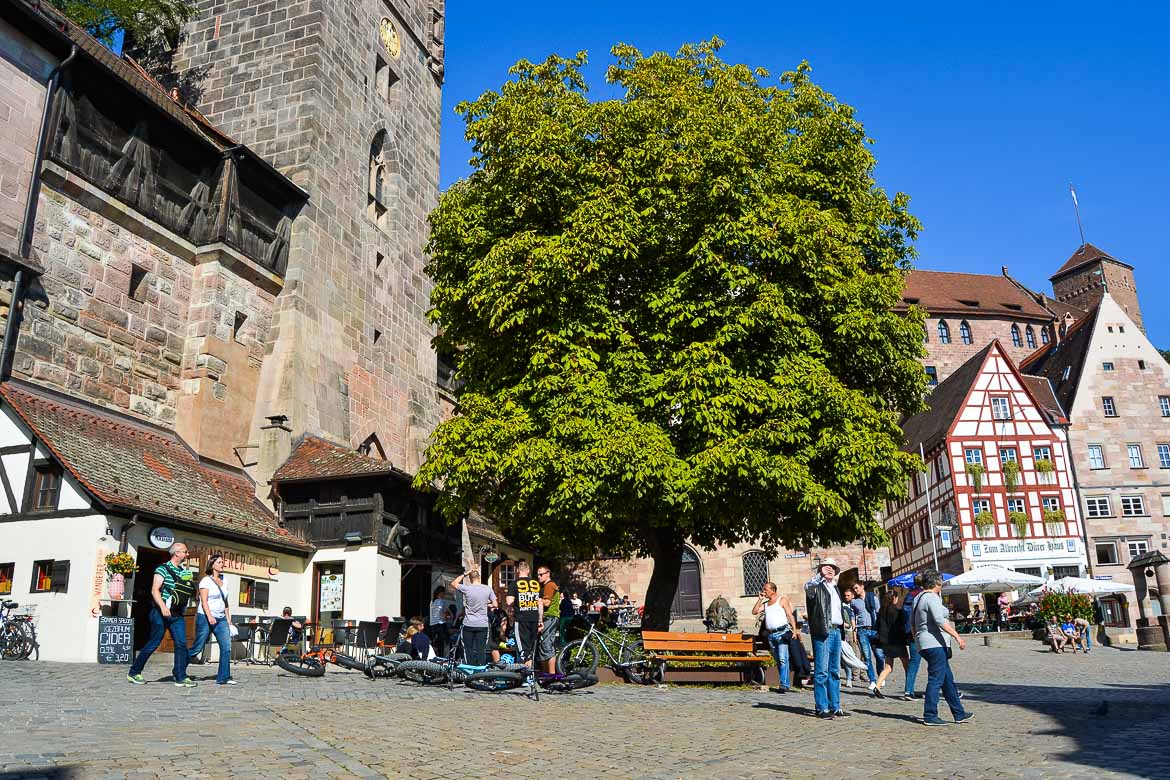
Where To Stay
Dürer Hotel is right in the centre of the Altstadt near the Tiergärtnerplatz and close to the prime sites around Nuremberg. The rooms are large and comfortable, and the breakfast buffet is top notch.
Nuremberg Travel Tip:
If you’ll be visiting Nuremberg and are interested in taking in some of the cultural sites, I recommend looking into the Nürnberg Card. The card provides access to many of Nuremberg’s most popular tourist spots and includes unlimited public transit over a two day period. The Nürnberg Card is sold at the Tourist Information Office and around the city for 25E per person.
Nuremberg Travel photos by Lauren Barth and courtesy of Uwe Niklas (slider, #5)
Departful was a guest of Franken Tourismus and Nuremberg Tourism, but all recommendations and opinions are our own.
Make your next trip the best one.
Departful is a full service travel agency creating truly exceptional travel experiences that are 100% personalized to you. Wherever you’re going, whatever your interests, we help you plan the perfect trip.
Lauren
Lauren co-founded Departful in 2012 and is the Managing Director of Departful Media. Since then she has worked between North America and Europe and has published content in partnership with a variety of tourism boards and businesses based around the world. Lauren is currently based in Toronto, Canada.


